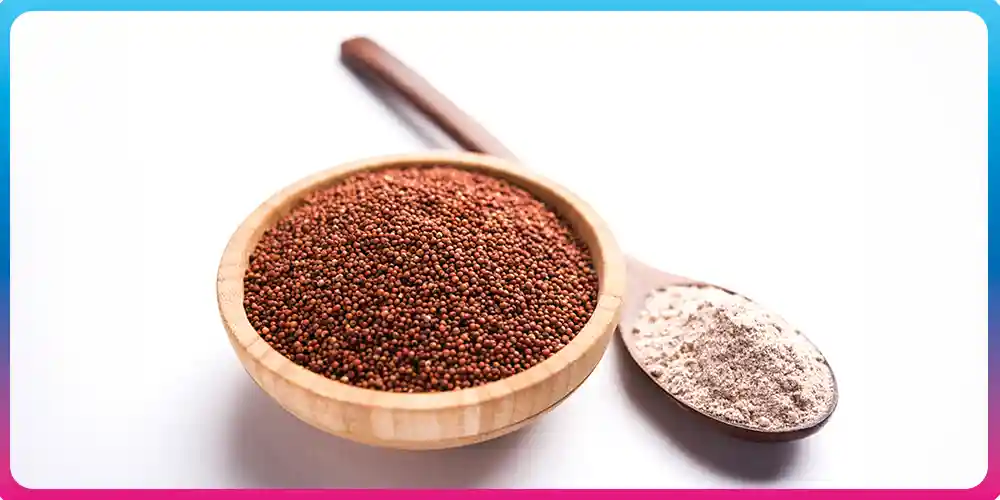One popular myth is giving up wheat flour (atta) and switching to multigrain flour or millet, like ragi, due to its perceived higher fiber content. In this article, we will try to find the answer to the question by investigating the nutritional value and glycemic index (GI) of ragi.
For people with diabetes, it is important to understand the nutritional elements in their diet and portion control. In order to manage diabetes effectively, one can also opt for a scientifically proven diabetes management program.
What is Ragi?
Ragi, also known as naachni or finger millet, is a group of small, rounded whole grains. It has a brown color and can be ground into ragi flour, also known as ragi ka atta, for various recipes.
Nutritional Value of Ragi per 100g
A 100-gram serving of ragi provides the following nutrients:
- Protein: Up to 7.30 grams
- Fat: Up to 1.30 grams
- Potassium: Up to 408mg
- Carbohydrates: Up to 72 grams
- Energy: Up to 328
- Iron: Up to 3.9mg
- Carotene
- Sodium: Up to 11mg
- Dietary fiber: Up to 11.50 grams
- Calcium: Up to 344mg
Ragi Glycemic Index
The glycemic index (GI) of ragi ranges between 54 and 68, placing it in the medium range. The GI score may vary based on whether ragi is consumed as a whole grain or in atta form.
What are the health benefits of eating ragi?
Ragi offers several health benefits, including:
- High Fiber Content: Ragi is rich in fiber, promoting a feeling of fullness and preventing unhealthy hunger pangs between meals.
- Good Source of Protein: Ragi is an excellent protein source, particularly beneficial for vegetarians, as it fulfills a significant portion of the daily protein requirement.
- Gluten-Free: Ragi is gluten-free, making it a suitable choice for individuals with gluten intolerance.
- Antioxidant-Rich: Ragi is rich in antioxidants, which help reduce oxidative stress in the body.
- Heart Health: Magnesium content in ragi contributes to maintaining a healthy heart.
- Bone Health: Ragi's calcium content supports strong bones.
- Skin Health: Ragi contains vitamins B1 (thiamine) and B3 (niacin), which are beneficial for skin health.
- Is Ragi Good for Diabetes?
While whole grains and millets are generally good for people and may aid in weight loss, data on personalized glycemic response suggests that ragi can cause a spike in blood sugar levels. Therefore, it may not be a healthier alternative to chana flour (besan) or atta (wheat flour). However, the effect on blood sugar levels varies among individuals, and the only way to determine if it is suitable for you is to measure your personalized glycemic response.
Conclusion
While diet plays a crucial role in diabetes management, it's essential to consult with a nutritionist before making any dietary changes. Remember to focus on other aspects such as exercise, stress management, and sleep to effectively manage diabetes...


No comments yet